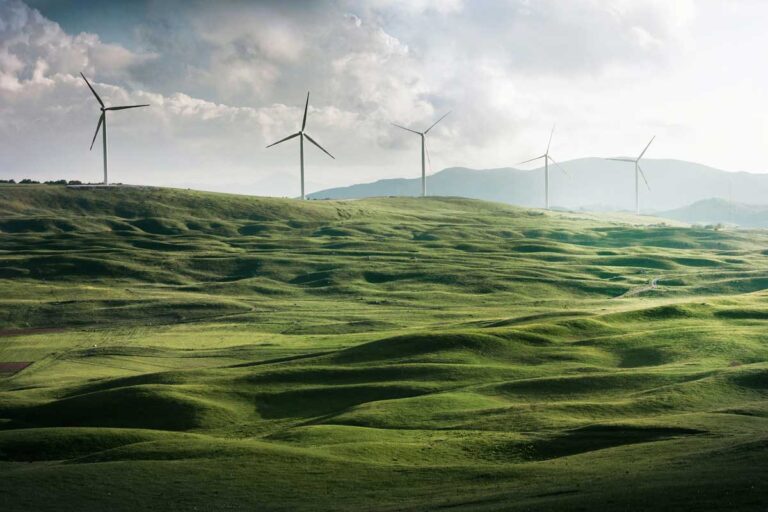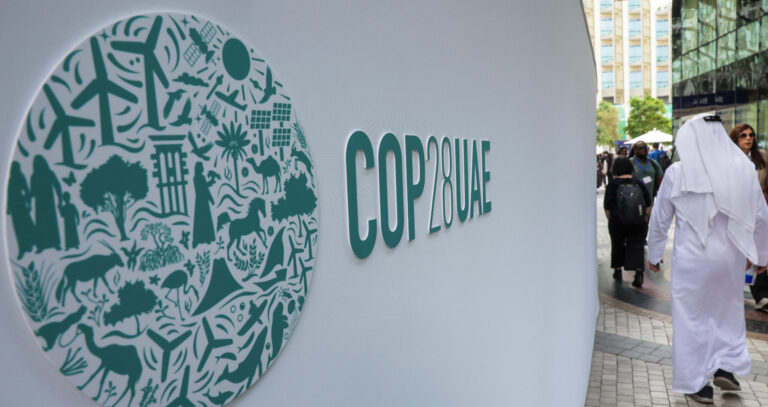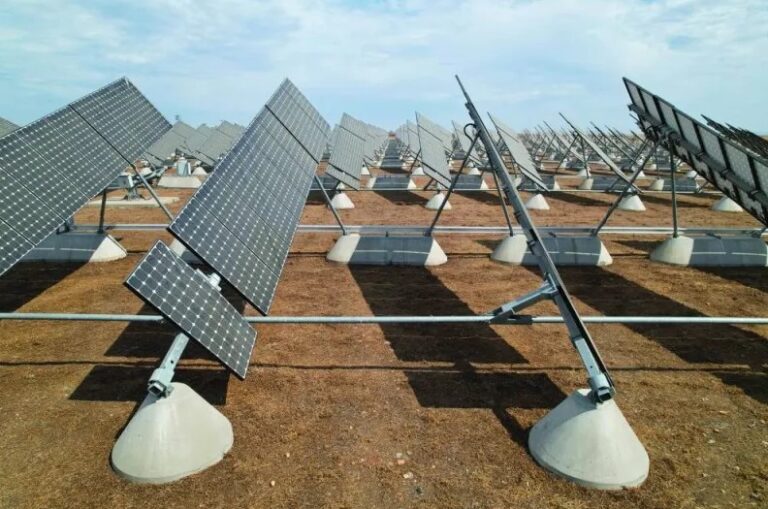In the dock: Pivotal climate change testimonies in US

From Mexicans left homeless by rising seas to Colombians affected by coral bleaching, hundreds of people are telling the top human rights court in the Americas what climate change means to them in an historic case that could shape international law.
Environmental lawyers also hope the hearings at the Inter-American Court of Human Rights (IACHR), which were requested by Colombia and Chile, will define the duties of states to confront the climate crisis and stop it infringing on human rights.
As well as receiving submissions from climate victims, the Costa Rica-based court, which started its inquiry in Barbados in April, will hear from UN agencies, legal experts, grassroots environmental campaign groups, and youth groups.
The next sessions are due to be held in Brasilia and then Manaus, Brazil at the end of May, and an advisory opinion is expected by May 2025.
“We’re hoping that the court’s legal opinion is a guide and reference for Mexico, and other states, to develop public policies from a climate justice perspective,” said Nora Cabrera, a lawyer and head of Our Future, a Mexico-based youth climate justice campaign group.
“And that it includes loss and damage compensation for affected communities, and adaptation policies for those not yet directly affected by climate change,” said Cabrera, who will be speaking at the next hearing in Manaus.
In January, Colombia and Chile asked the IACHR to issue the advisory opinion, saying that they were experiencing the “daily challenge of dealing with the consequences of the climate emergency,” including fires, landslides, droughts and floods.
“These events reveal the need for an urgent response based on the principles of equity, justice, co-operation and sustainability, with a human rights-based approach,” they said in their petition.
“There is a close relationship between the climate emergency and the violation of human rights,” they added.
It is this link between climate change and human rights that the IACHR will seek to define, while also examining how climate change affects migration and looking at the disproportionate effect on children, women and Indigenous people.
Chile and Colombia also asked the court for clarification on a state’s duties to protect environmental activists.
Latin America is the most dangerous place in the world for environmental and land defenders, according to advocacy group Global Witness. Around 90% of the 177 killings of environmental activists recorded in 2022 took place in the region.
“The hearing aims to ask for clarity about human rights obligations and the climate crisis,” said Jacob Kopas, senior attorney at the Earthjustice environmental group, one of a group of lawyers who spoke at the Barbados hearing on April 26.
“It will help to create a more concise framework to guide state behaviour and policy to confront the climate crisis and protect human rights,” said Kopas.
Among those submitting testimonies will be the residents of the El Bosque fishing community in Tabasco, Mexico, where rising sea levels caused by climate change have swept away about 200 meters of coastline.
Since 2019, the school and more than 50 homes have been destroyed, forcing about 200 people to leave.
El Bosque community leader, Guadalupe Cobos, said she and 10 neighbours will probably have to leave within a year and resettle in an area about 12km away, where new homes are being built by the government.
“We depend on the sea but coastal erosion has affected our way of life. It’s important for the court to know that we’re living climate change now and that this isn’t something that will happen in the future in 20 or 50 years’ time,” said Cobos.
“We want the court to hear our experiences and to know that our rights have been violated, that we have been forced to migrate,” Cobos told the Thomson Reuters Foundation.
The court’s advisory opinion could have important implications for climate litigation across Latin America and the Caribbean and make it easier for communities living with the effects of global warming to take legal action.
The opinion will apply to all signatories of the American Convention on Human Rights, most of whom are members of the Organization of American States. The United States and Canada have not ratified the treaty however.
The advisory opinion will help shape the region’s legal systems as many countries incorporate its jurisprudence into their laws and constitutions.
“We’re hoping that the court makes the link between the climate crisis and human rights violations and that it recognises climate displacement,” said Cabrera, whose organisation has been supporting the El Bosque community.
The IACHR is known for its progressive stance on climate justice and human rights.
In March, it recognised that citizens in Peru have the right to a healthy environment when it ruled in favor of people living in the Andean mining town of La Oroya, who had suffered from decades of environmental pollution.
Other courts are also breaking new ground in this sphere.
In Colombia in April, in response to a lawsuit filed by a farming couple who were driven out of their home by flooding caused by heavy rains, the country’s constitutional court recognised the links between environmental disasters and climate change and people being forcibly displaced.
Across the world, other top courts are also examining the connection between human rights and climate change. On April 9, the European Court of Human Rights (ECHR) ruled that the Swiss government had violated the human rights of its citizens by failing to do enough to combat climate change.
Two other courts – the International Court of Justice (ICJ) and the International Tribunal for the Law of the Seas (ITLOS) — are also expected to give advisory opinions on international legal obligations of states regarding climate change.
Kopas said the IACHR ruling could lead the way by delivering a “forward-reaching and progressive” advisory opinion.
“It’s historic because of the climate crisis we are in. This is the crisis of our lifetime and of all future generations.” — Thomson Reuters Foundation









By contrast, assistance to Ethiopia has declined in recent years. As a result, Ethiopia recently defaulted on its external debt, even though it amounts to just 25% of GDP. While the Kenya approach is not the solution – providing similar levels of support to all illiquid countries would require a tripling of MDB flows – this is clearly unacceptable.
A better approach would focus on closing the gap between short-term debt concerns and long-term investment needs, by unlocking net-positive inflows for countries facing liquidity constraints. As the FDL has proposed, an agreement among debtors, creditors, and MDBs to permit countries to reschedule debts coming due – delaying maturities by 5-10 years – would create fiscal space for climate-friendly investments, financed by MDBs.
For this liquidity bridge to work, MDBs would have to accelerate progress on implementing existing reform plans and increase funding substantially, while the IMF helps manage debt-rollover risks. Importantly, private and bilateral creditors would have to agree to the rescheduling. That is why, compared to the Debt Service Suspension Initiative that the G20 introduced in 2020, the proposal includes stronger incentives for private-sector creditors to participate, in addition to longer time horizons.
There are good reasons to believe that creditors can be convinced to join the program voluntarily. It is, after all, in their best interest to remain invested in solvent countries with strong growth prospects; no one benefits from debt crises like those that have ensnared Zambia and Sri Lanka. In any case, creditors would continue receiving interest payments, and as global interest rates fall and economic-growth prospects improve in the coming years, debtors may well be able to return to capital markets and resume repayment of the principal.
Shaping a workable blueprint along these lines is a task for upcoming international gatherings, such as the G20 summit in Brazil later this year. Logistical and financial coordination will be needed to ensure sufficient liquidity. Coordination among the IMF, the World Bank, and regional development banks will also be essential to ensure that participating debtor countries pursue investments that genuinely support green growth.
If nothing is done to help countries facing liquidity crises, the world will risk a wave of destabilizing debt defaults, and progress on the green transition will be severely undermined, with catastrophic implications for the entire world. Because promising solutions like the liquidity bridge can prevent such outcomes, they deserve broad global support.